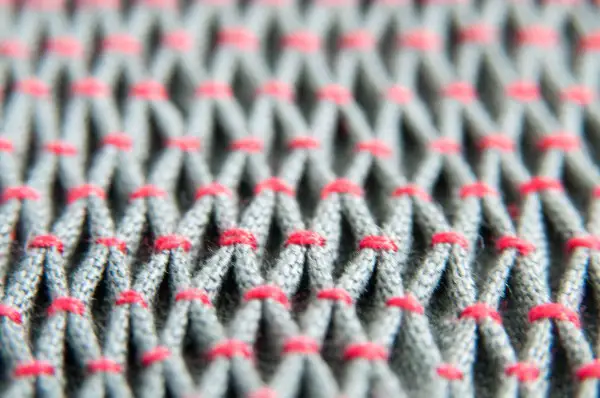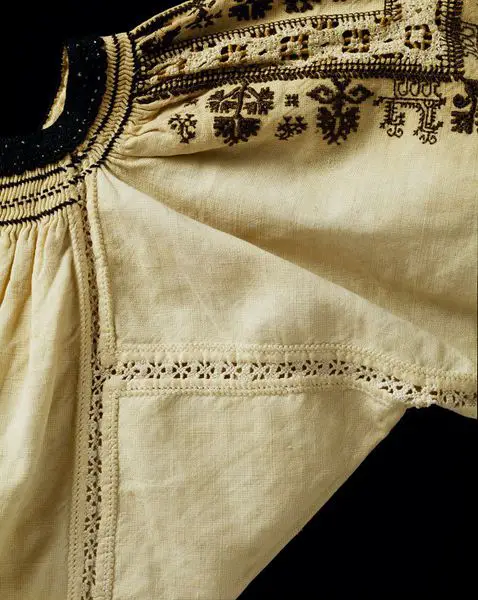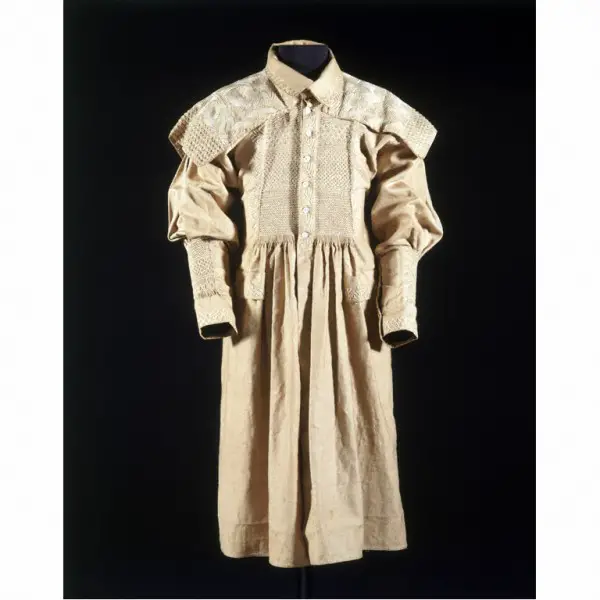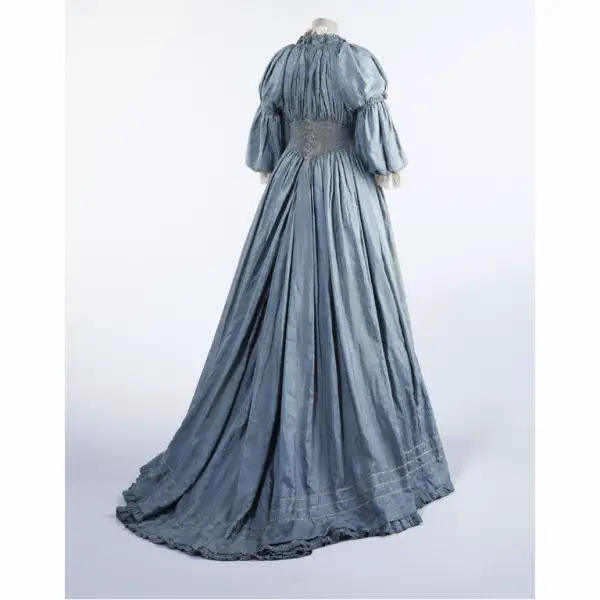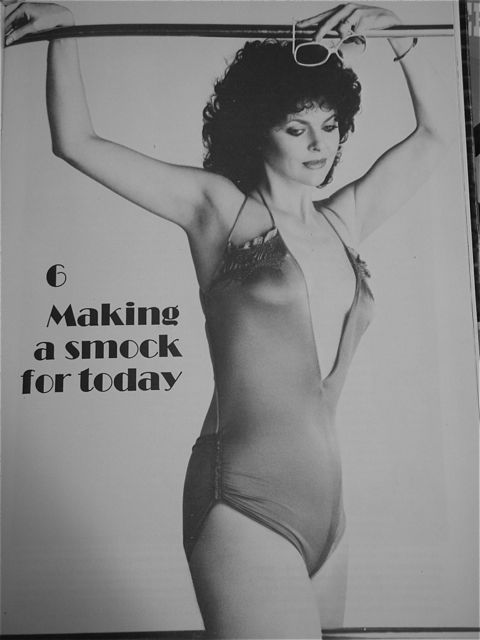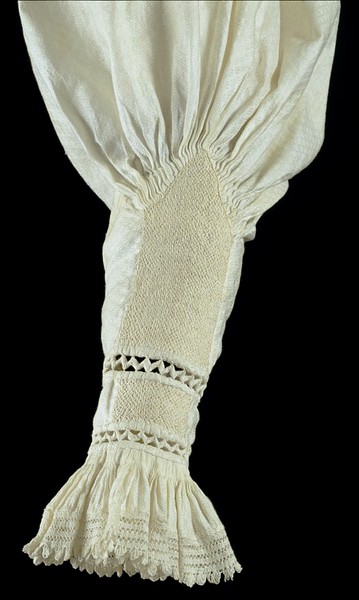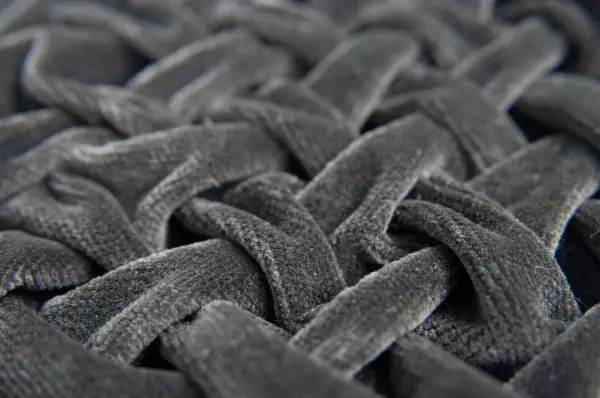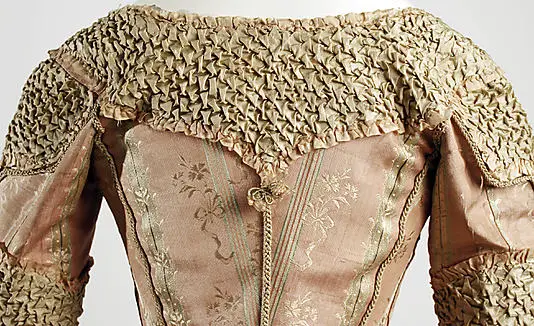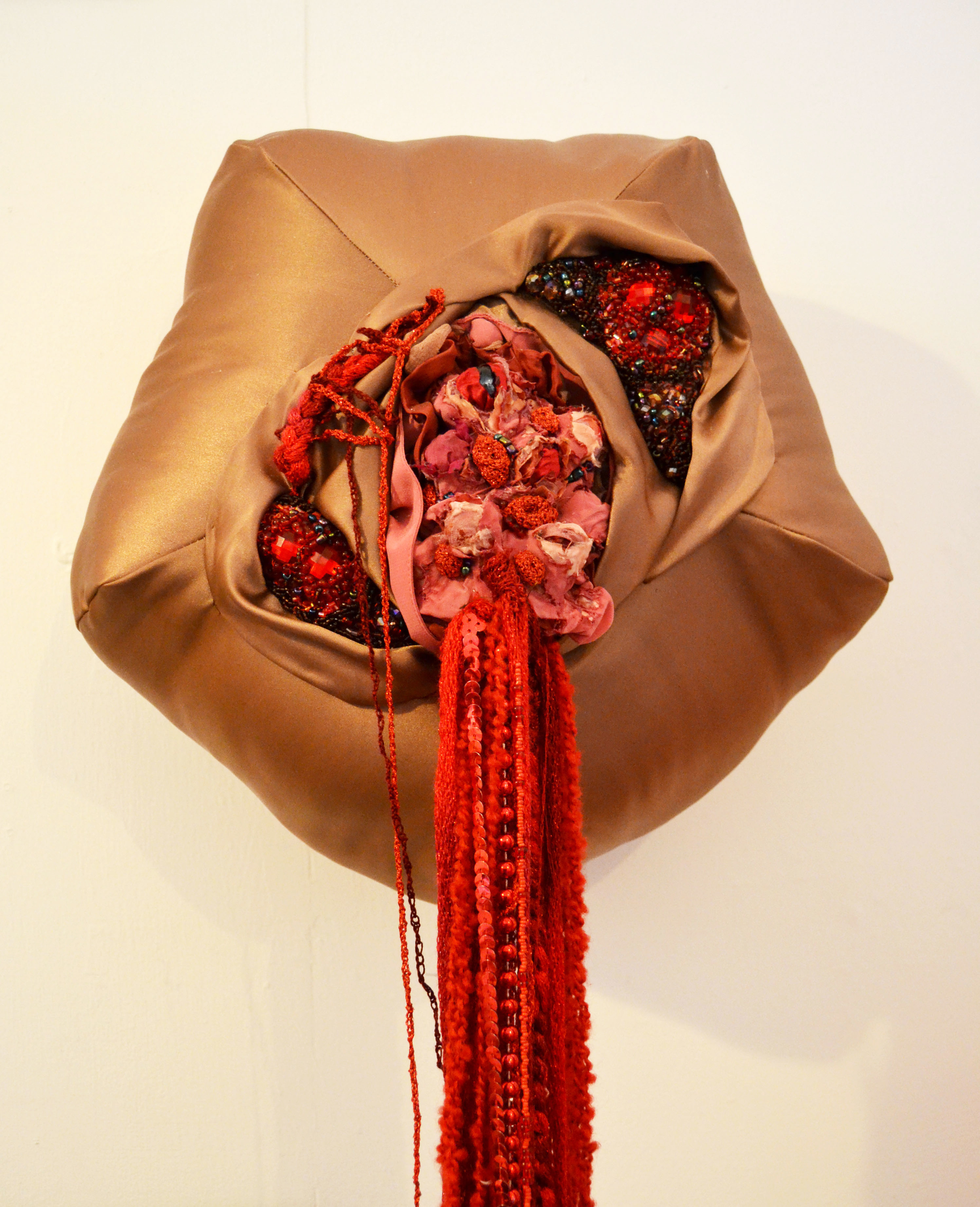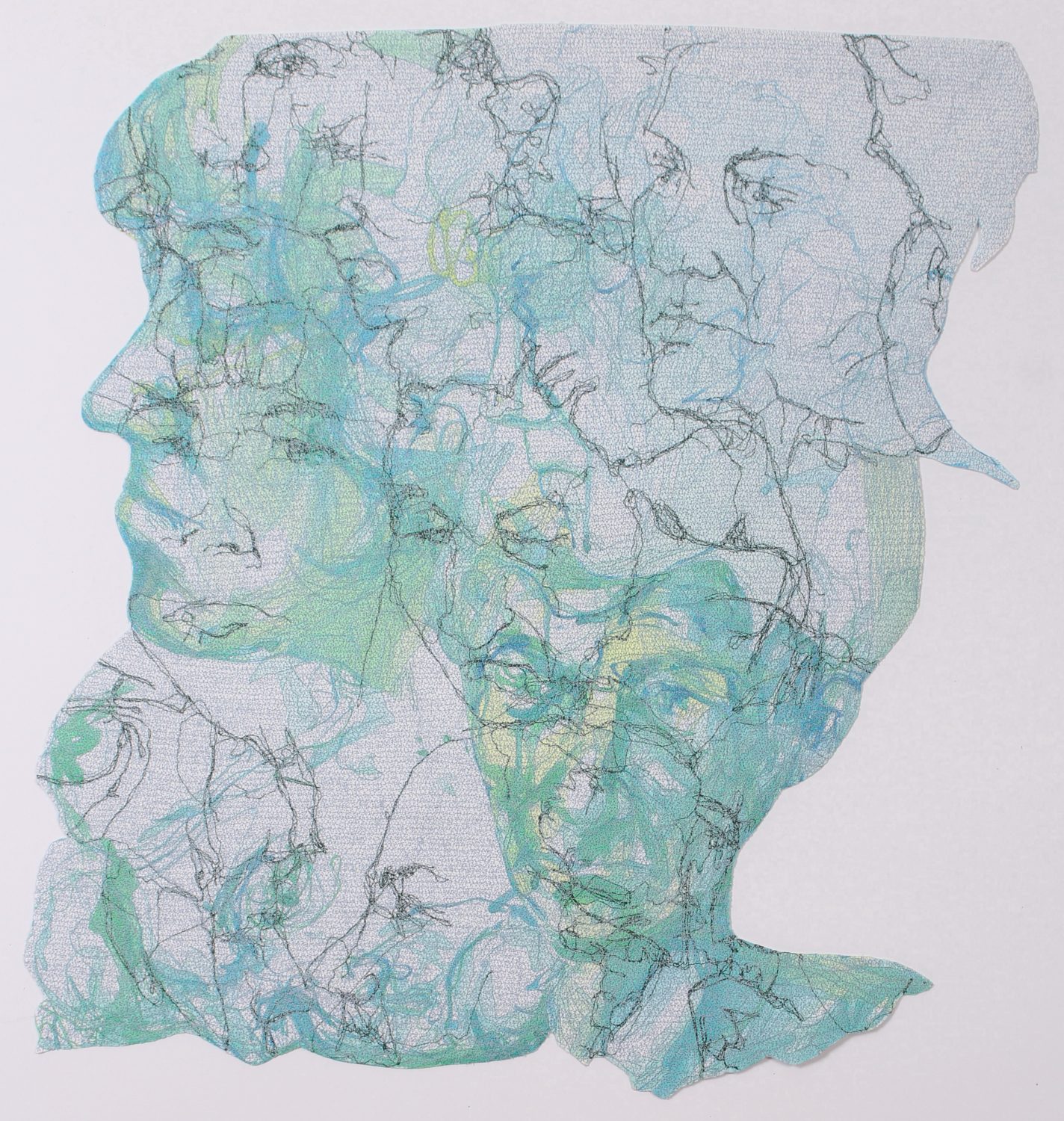Smocking is seen everywhere, from historical garments to modern catwalks and little girls dresses. In this post we will explain what it is and a little of its history.
Smocking is a traditional embroidery technique that gathers fabric together into tight pleats so that it can stretch and return to its gathered shape. It is often used as a form of decoration on a garment, as the gathering of the material and stitches can be formulated to create patterns.
The History Of Smocking
Smocking, like so many textile techniques, has a rather secretive history. From what I can find out, the technique of smocking is often confused with the garment called a smock. For centuries, women’s main undergarment was a nightdress-like linen smock, which could be decorated (were the lady wealthy enough) but often was not, and there’s not much evidence of this garment being decorated with actual smocking. There are a number of Tudor portraits which appear to show smocking on smocks’ necks and cuffs but it is impossible to say for sure if they really are made by smocking – which is a decorative stitching on top of previously pleated or gathered fabric.
This Spanish child’s smock, dating somewhere between 1700-1800 has what looks like proto-smocking; gathers overstitched with black thread for decorative effect.
The garment most commonly called a smock these days used to be called a smock frock, which sort-of helps distinguish it. This practical, although decorated, garment developed during the 18th century as a protective, enveloping apron-like shirt worn by manual and agricultural workers to keep their clothes clean. It may well have developed from the voluminous, washable, linen undergarments that men and women continued to wear to keep their outer clothes clean from body odour and sweat.
Smock-frocks as we know them now, are made from rectangular pieces of cloth (no curves so no fabric waste) with gathering to create shape. Gathering pulls in the fabric which is then released below, to create an easy-to-wear and practical smock. Smocking itself allows the fabric to stretch a little which would also increase wearing comfort. In addition, smocking creates a thick, dense fabric full of small air pockets which act as insulation – a welcome benefit in outdoor work, as well as the protection of thicker layers.
As with many other practical garments, they could be embellished and embroidered. When smocks first began to have decorative stitching is unknown, but those that survive from the early 19th century can be stunning. Of course, the finest ones that were looked after are the ones that survive, and the every day ones, worn out and threadbare, would have been recycled rather than preserved, so we tend to see only the best examples.
By the end of the 19th century, the smock was out of favour – many agricultural workers having had to move to cities and work in factories, for which a flowing garment was impractical. Just as the farmers’ smock goes out of style, the technique of decorative smocking starts to come into style in fashionable circles.
The women of the aesthetic movement (closely associated with the Pre-Raphaelites) took to wearing loose-fitting, ‘healthy’ garments which didn’t require the wearing of a corset. The style of flowing and comfortable garments were heavily-influenced by smocks, along with other styles of dress, and it was unsurprising that smocking was also used to create shaping and decorative effects. This velvet example at FIT (The Fashion Institute of Technology) is stunning.
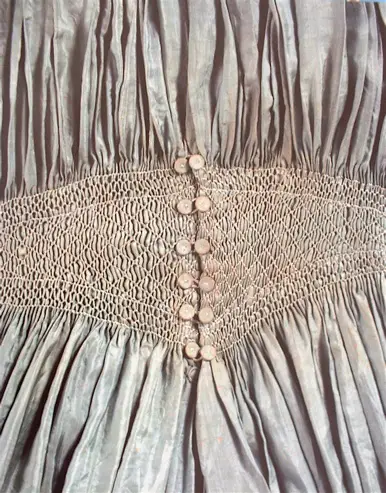
Smocks were also popular for aesthetic children’s wear. Patterns using the techniques appear in women’s magazines too, such as this smocked bag from a 19th century magazine.
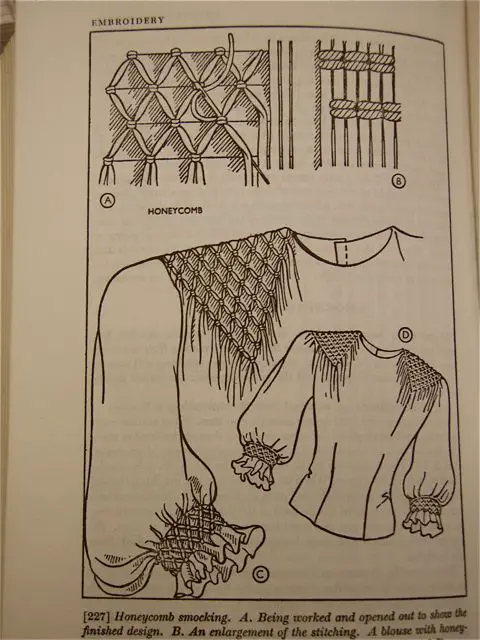
Smocking In More Modern Times
In the early 20th century, smocking appears in women’s magazines and sewing manuals on garments, domestic textiles and children’s wear, such as this example from the Women’s Home Companion, 1916. The 1930s and 1940s were the heyday of patterns and innovative stitch development along with some stunning uses of the simplest honeycomb stitch pattern such as this velvet dress by Maggie Rouff. As with many crafts, smocking was revived in the 1970s when such delights as the smocked plunge-neckline swimming costume was created.
It is also sometimes seen on folk or traditional costume from Europe. This 19th century Russian blouse makes beautiful use of shaped smocking on the cuff.
Is Smocking Hard To Prepare And Do?
True smocking is hand stitched, and incredibly time-consuming to prepare. The reverse fabric is marked with regular dots (for which embroidery transfers were produced) or marked with a grid, then regular stitches are made right across the piece to create completely even rows of gathers. The decorative stitches are worked from the front side and can be as simple as honeycomb stitch (my personal favourite) or covered with complex and varied designs.
Are There Different Kinds Of Smocking?
Faux smocking using shirring elastic came in during the smocking craze in the 1970s, and it is this much-faster technique that became most commonly used for women’s and girl’s dresses, including many of the Laura Ashley classics.
American or Canadian smocking is a different technique altogether. This type of smocking is all worked from the back, with the gathering and decorative pattern-making all rolled up into one. The earliest example of this technique that I have ever seen is on an 18th century French dress, now in the Metropolitan Museum of Art.
Sewing manuals of the 19th and 20th century don’t seem to include reverse / American smocking, so it may be that it was fairly unknown to the amateur sewer, and only occasionally used by the professional. It became very fashionable in the 1930s and 40s and had a renaissance in the 70s. The most popular use of this technique was on cushions square, bolster and round cushions in synthetic velvet from the 60s and 70s, although this pattern is little earlier. There’s no shortage of brilliant patterns for products using American smocking, some of which I have gathered on my Smocking Pinterest board, along with other historic and contemporary forms of smocking.
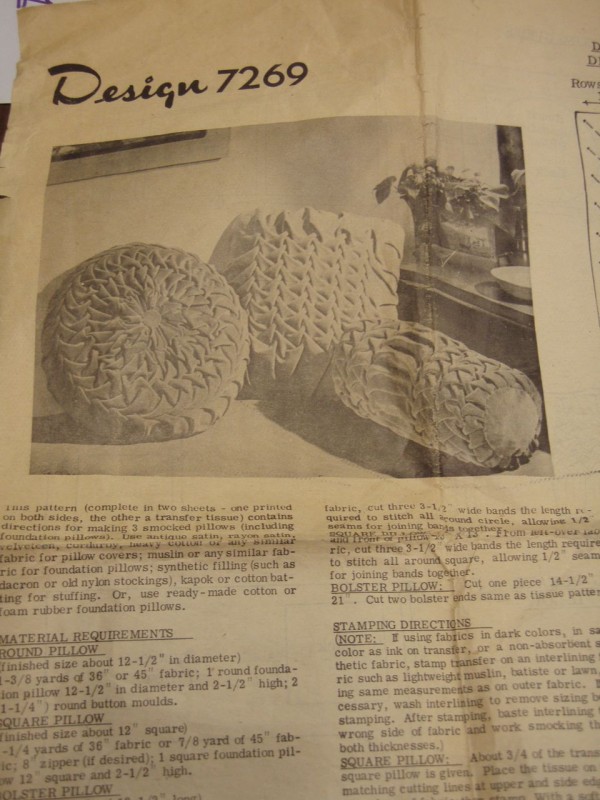
The acknowledged expert at making this American smocking fashionable today is Nitin Goyal, a London-based designer who creates stunning silk cushions, bedspreads and scarves using some amazing variations on the technique. I believe the work is made in India. His work is now thoroughly copied and new American-smocked cushions can be picked up in many high street shops.
As far as English smocking goes, perhaps the best use of the technique is Tinctory, who makes stunning textile jewellery using circular English smocking. I am lucky enough to own this piece.
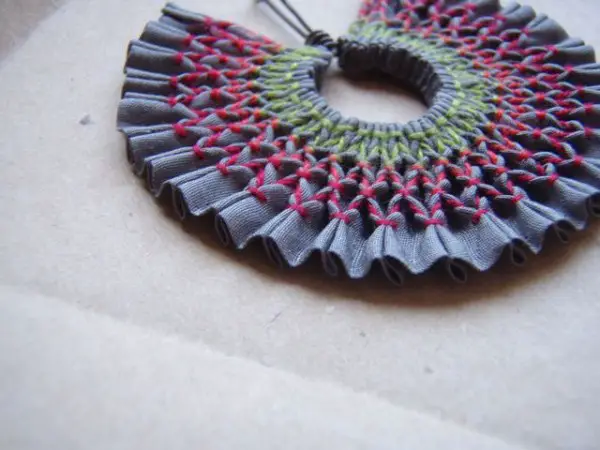
As smocking is such a time-consuming technique, it doesn’t seem to be used that much in clothing, but it does sometimes still appear in couture, like this Versace piece, which is glorious at odds with agricultural smocks!
Is this technique used today like it was back in history?
Yes. We see it still being used within the manufacturing of both children’s and adults clothing, although elastic is now used so that the pleats of the smocking can stretch, where as in historical forms of smocking it was not used. Imagine starched blouses and collars of kings and queens back in the day….no elastic used, although they may have wished there was!
Artists today are very much inspired by Smocking. We came across the work of Jill Flower who developed a collection of collars…

To see more of this artist work, please visit her website.
Where Can I Learn More?
If you are intrigued by these gorgeous techniques, why not read more about it in this awesome book published by the very writer of this column Ruth Singer?
Read our review of Fabric Manipulation by Ruth Singer here!
Then…
Get your copy from BookStore and support independent bookshops!



